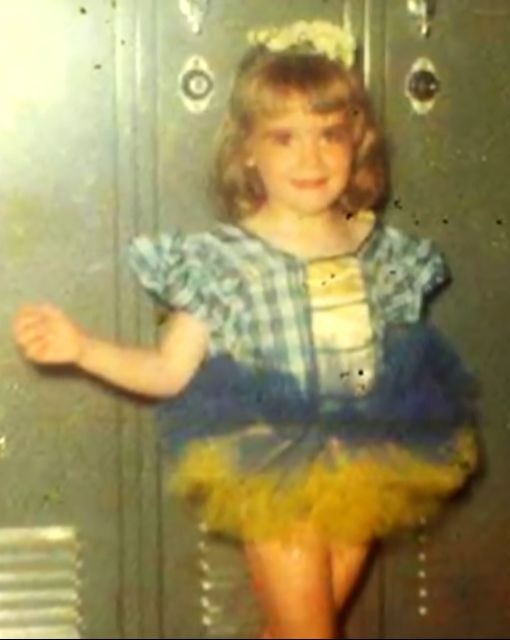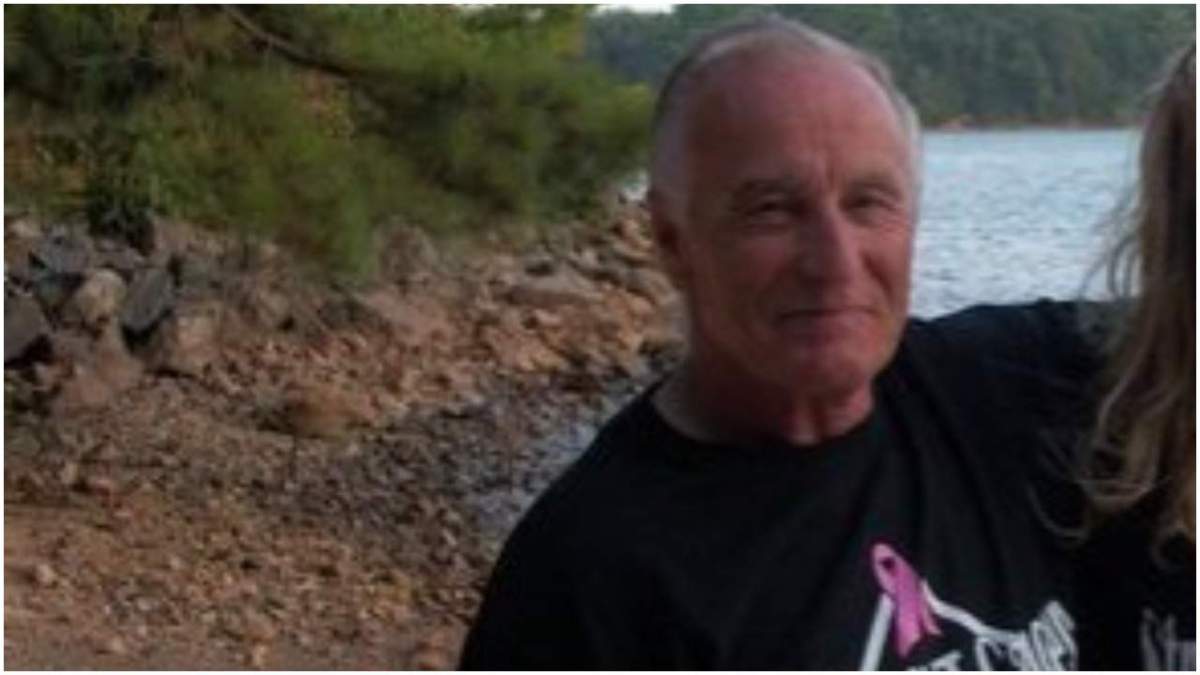2018
It was the first day of June, the unofficial beginning of summer, and a maroon car was careening across a Little League baseball field in Sanford, Maine’s Goodall Park. Players rushed to get out of the way as the driver—police later identified her as 52-year-old Carol Sharrow— barely missed them, curving toward home base then away again. She was looking for an exit and spotted a gate. More kids were in danger on the other side.
A witness named Justin Clifton later told a Maine news station what happened next. He said he “saw the car pull out of the […] and this guy had some kids with him.”
Clifton said that when the car “came to the gate, the older guy pushed the kids right out of the way. He took the hit for the kids.”
So, Douglas Parkhurst, age 68, died taking that “hit for the kids.” The Vietnam vet was the hero of the moment and a tragic one at that. A man who in photos appeared ruddy, fit for his age, with a winning smile. It was a moving, powerful story.
For the second time in five years, Douglas Parkhurst’s name was in the news along with the phrase “hit-and-run driver.”
The first time was a very different story.

1968
An ice cream cone in the road on Halloween night.
Reading about four-year-old Carolee Sadie Ashby’s death in a newspaper article published Nov. 1, 1968, that image leaps off the screen. Her ice cream cone on the pavement late in the afternoon, leaves blowing by.
Carolee was crossing the road, holding the hand of her older sister Darlene—they’d been out buying candles for her birthday cake. The little girl was a few feet behind when the car sped through. It knocked her out of her cowboy boots. She was found 133 feet away.
Police interviewed several people who drove 1962 Buicks but didn’t develop any solid suspects.
The car vanished. Decades passed. Carolee Ashby, however, wasn’t forgotten.
1970
From the Syracuse Post-Standard, August 27: “Airman I.C. Douglas E. Parkhurst, son of Mr. and Mrs. Oral L. Parkhurst […] is on duty at Tuy Hoa Air Base, Vietnam. A food services specialist, Parkhurst is assigned to the 31st Services Squadron, a unit of the Pacific Air Forces, headquarters for air operations in Southeast Asia, the Far East, and Pacific area.
“Parkhurst is on his second tour of duty in Vietnam. He previously served at Davis-Monthan Air Force Base, Ariz.…”
2000
In an article titled “Police reopen 1968 hit-and-run,” Fulton, NY police chief Mark Spawn admitted this to the Associated Press: “Finding physical evidence or finding the car 32 years later is next to impossible.” He was referring to evidence pointing to whoever dove the car that killed Carolee Sadie Ashby. “We are looking for an eyewitness or someone who may have heard someone talking about it,” he said.
He was hoping someone would come forward, hoping that “the person who did it will have a change of heart.”
Speaking to the AP, Carolee’s father George told of how hard October 31 was for his surviving daughter. “Every Halloween, it’s hard to say happy birthday to Darlene. Ninety-nine times out of 100, she starts crying.”
2012
The police didn’t have anything. Lead after lead, year after year, no luck. Then someone who’d known the Parkhursts was surfing Facebook and read about the case. She made a connection that must have been deeply disturbing. She went to police and told them of being approached by someone in Douglas Parkhurst’s family who asked her to say she had been out with him on Halloween night, 1968. She never knew why, but she assumed at the time that it had something to do with the death of Carolee Ashby.
One of the Buick owners interviewed by police in 1968 was Douglas Parkhurst. His car was the right make and model and it had front-end damage. The damage wasn’t even consistent with his claim of having struck a post.
But he wasn’t a suspect until this former acquaintance fingered him 44 years later.
Police had something to go on, and eventually, perhaps miraculously, they tracked down his car, abandoned on a relative’s property.
They reportedly brought Parkhurst in for questioning several times, and he ultimately confessed. He’d been at the wheel that Halloween night. His brother was asleep in the back seat, and they were both drunk. He was, he said, “99.9 percent” certain he’d killed Carolee Sadie Ashby.
And there was nothing police could do about it because the statute of limitations had run out. Parkhurst knew that before he confessed.
Assured he was safe from punishment, Parkhurst wrote that while he was driving through Fulton, NY on Halloween 1968, he “heard a thud.”
“It sounded like I hit a dog,” he wrote, “I don’t know where I hit that thing […] I don’t remember when I hit that thing, but I know I told the police I had got into an accident at about 6:45 pm that night.”
“I did not see what I hit,” he wrote, “I did not stop. I don’t remember hitting the [brakes].”
Later in his confession, Parkhurst indicated he wished the police had questioned him more closely because he “would have told them the truth.”
Parkhurst said in his statement that after Vietnam he’d forgotten and did not start thinking about it again until police contacted him 45 years later. As for his Buick Special, found rusted out beneath brush on the family property, he didn’t know how it got there.
He left New York State for Maine soon after his name hit the news.
***
Reading Parkhurst’s confession to hitting and killing Carolee Ashby and knowing that he insisted police reassure him he wouldn’t be arrested is disturbing. Sometimes referring to the girl as “the thing” even though he knew her name is unsettling.
Perhaps he wasn’t accustomed to expressing himself in writing. Perhaps he’d learned to separate himself from the act by depersonalizing Carolee—or as he referred to her a couple of times in his confession, “the little Ashby girl.”
He did realize he must have hit her. His car was hidden. He went to ‘Nam. The notice of his second tour in August 1970 was published just under two years after Carolee was killed, and tours of duty generally lasted a year. He may have been drafted, but if he entered the military of his own volition, it wasn’t very long after the hit-and-run. Not long at all.
Douglas Parkhurst did the right thing that day in Sanford, Maine. It was the definition of heroism.
Only to have a car allegedly driven by a woman named Carol take his life just under 50 years after he’d taken Carolee’s. He chose to do it. Was he seeking redemption in final moments? Adrenaline in the face of danger doesn’t really work that way. He was more likely reacting with the instincts of a dad, or a granddad.
People are drawn to true crime for many reasons. Some are fascinated with the psychology behind it. Others get an adrenaline bump from the human drama of it all. And many true crime fans also love the idea of a world starkly divided between good and bad, and they love seeing the good triumph.
The story revealed after Douglas Parkhurst’s death was mind-bending. So many coincidences, and so many spiritual questions about fate, about karma.
But squaring his final act with killing Carolee Ashby is the strangest thing of all. It reminds us that sometimes there are a lot of gray shadows between dark and light. It’s easy to say that Parkhurst’s death closed some kind of karmic loop, but the shadows won’t go away.
This article was featured in the InsideHook newsletter. Sign up now.
























